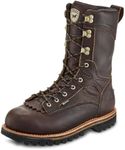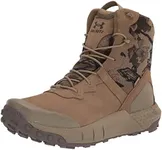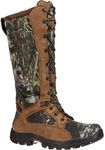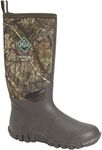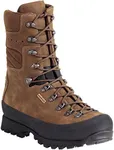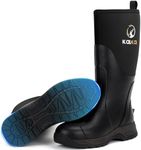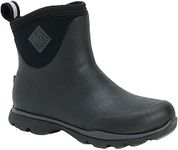Buying Guide for the Best Hunting Boots For Men
Choosing the right hunting boots is crucial for a successful and comfortable hunting experience. The right pair of boots will keep your feet warm, dry, and supported throughout your hunting trip. When selecting hunting boots, consider the environment you'll be hunting in, the type of game, and the duration of your hunts. Here are some key specifications to help you make an informed decision.MaterialThe material of hunting boots affects their durability, weight, and water resistance. Common materials include leather, synthetic fabrics, and rubber. Leather is durable and offers good support but can be heavier. Synthetic materials are lighter and often more breathable but may not be as durable. Rubber boots are excellent for wet conditions but can be less breathable. Choose a material based on the terrain and weather conditions you'll be facing.
InsulationInsulation in hunting boots is essential for keeping your feet warm in cold weather. Insulation is measured in grams, with higher numbers indicating more warmth. For mild weather, 200-400 grams of insulation may be sufficient. For colder conditions, 600-800 grams is recommended, and for extreme cold, 1000 grams or more may be necessary. Consider the typical temperatures you'll be hunting in to determine the right level of insulation.
WaterproofingWaterproofing is crucial for keeping your feet dry in wet conditions. Look for boots with waterproof membranes like Gore-Tex or other waterproof treatments. Fully waterproof boots are ideal for hunting in marshes, swamps, or rainy environments. If you hunt in dry areas, water-resistant boots may be sufficient. Assess the likelihood of encountering wet conditions during your hunts to decide on the level of waterproofing needed.
Fit and ComfortA good fit is essential for comfort and preventing blisters. Hunting boots should fit snugly but not too tight, allowing room for thick socks. Consider the width and arch support of the boots, as well as any additional cushioning. Try on boots with the socks you plan to wear while hunting to ensure a proper fit. Comfort is key, especially for long hunts, so prioritize boots that feel good on your feet.
TractionTraction is important for maintaining stability on various terrains. Look for boots with aggressive tread patterns for better grip on slippery or uneven surfaces. The type of sole material also affects traction; rubber soles are generally more slip-resistant. Consider the terrain you'll be navigating, such as rocky, muddy, or snowy areas, and choose boots with appropriate traction to ensure safety and stability.
HeightThe height of hunting boots can affect ankle support and protection. Boots typically range from 6 to 18 inches in height. Lower boots (6-8 inches) are lighter and more flexible, suitable for mild terrain and shorter hunts. Mid-height boots (9-12 inches) offer a balance of support and flexibility, ideal for varied terrain. High boots (13-18 inches) provide maximum support and protection, perfect for rough or swampy terrain. Choose the height based on the level of support and protection you need.

